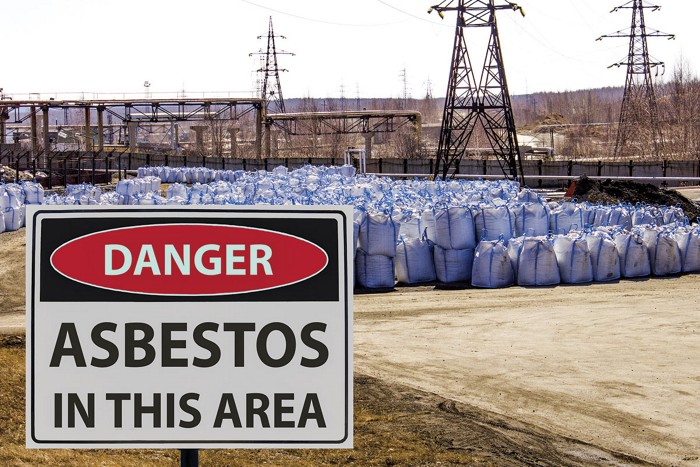Advertisement
Grab your lab coat. Let's get started
Welcome!
Welcome!
Create an account below to get 6 C&EN articles per month, receive newsletters and more - all free.
It seems this is your first time logging in online. Please enter the following information to continue.
As an ACS member you automatically get access to this site. All we need is few more details to create your reading experience.
Not you? Sign in with a different account.
Not you? Sign in with a different account.
ERROR 1
ERROR 1
ERROR 2
ERROR 2
ERROR 2
ERROR 2
ERROR 2
Password and Confirm password must match.
If you have an ACS member number, please enter it here so we can link this account to your membership. (optional)
ERROR 2
ACS values your privacy. By submitting your information, you are gaining access to C&EN and subscribing to our weekly newsletter. We use the information you provide to make your reading experience better, and we will never sell your data to third party members.
Chemical Regulation
US EPA’s proposed asbestos ban faces industry fight
Chlor-alkali producers cite negative impacts on water disinfection, supply chains
by Britt E. Erickson
April 6, 2022
| A version of this story appeared in
Volume 100, Issue 12

US imports of chrysotile asbestos, used exclusively by the chlor-alkali industry, would be banned under a landmark rule proposed April 5 by the US Environmental Protection Agency. The rule would also prohibit importing asbestos in products such as sheet gaskets and automotive brake parts.
The proposed ban marks the EPA’s first action to manage the risks of a high-priority chemical under the 2016 revisions to the Toxic Substances Control Act (TSCA). Asbestos, a human carcinogen, is one of the first 10 chemicals the EPA is scrutinizing under the amended law.
Most uses of asbestos have been discontinued in the US, but chlor-alkali producers have long fought to keep using the substance in diaphragms that separate chlorine and sodium hydroxide. Ten chlor-alkali facilities in the US, or about one-third, still use asbestos-containing diaphragms, according to the EPA. But alternatives are available. Nearly half of the US chlor-alkali industry uses fluoropolymer ion-exchange membranes, the EPA says in a press release.
Chlorine makers are urging the EPA to withdraw the proposed asbestos ban, claiming it would have unintended consequences on water disinfection and chemical supply chains. Chlorine is essential in the production of pharmaceuticals, agricultural chemicals, and products like batteries, wind turbines, and solar panels needed to achieve climate and sustainability goals, the American Chemistry Council (ACC), which represents chemical manufacturers, says in a statement.
The group argues that the EPA’s asbestos risk evaluation, finalized in 2020, overestimated worker exposure because it did not consider protocols required under Occupational Safety and Health Administration standards. “EPA failed to consider federal handling and worker protection requirements in its assessment and should re-evaluate and reconsider the proposal,” Kimberly Wise White, the ACC’s vice president of regulatory and scientific affairs, says in the statement.
Environmental and public health groups welcome the EPA’s proposed ban, calling it a major step toward eliminating exposure to a hazardous substance.
“We strongly support putting an end to the dangerous use of chrysotile asbestos by the chlor-alkali industry, which has irresponsibly failed to adopt proven non-asbestos technology in the decades since it became available,” Linda Reinstein, president of the Asbestos Disease Awareness Organization, says in a statement. “Industry opposition threatens to undermine the proposed rule and tie it up in litigation that delays it for years, allowing asbestos imports to continue,” she warns.
The EPA banned asbestos in 1989 under TSCA, but the asbestos industry challenged the prohibition. A federal appeals court ruled against the agency in 1991.
Concerns about the continuing use of asbestos in the US was a major driver of TSCA reform in 2016.
“Asbestos has long been the poster child for our broken chemical regulatory system. Far too many lives have been lost to unnecessary exposure to this deadly substance,” Melanie Benesh, legislative attorney at the Environmental Working Group (EWG), says in a statement. “This proposed rule represents a major step forward under the new Toxic Substances Control Act and will save lives,” she says.
The EWG and other advocacy groups emphasize that more work is needed to address the risks from legacy uses of asbestos, such as construction materials found in older buildings, as well as from asbestos-contaminated talc, and other forms of asbestos beyond chrysotile.
The EPA is evaluating those additional uses in a supplemental risk evaluation, as required under a legal settlement. The agency faces of December 1, 2024, deadline to complete that evaluation.





Join the conversation
Contact the reporter
Submit a Letter to the Editor for publication
Engage with us on Twitter